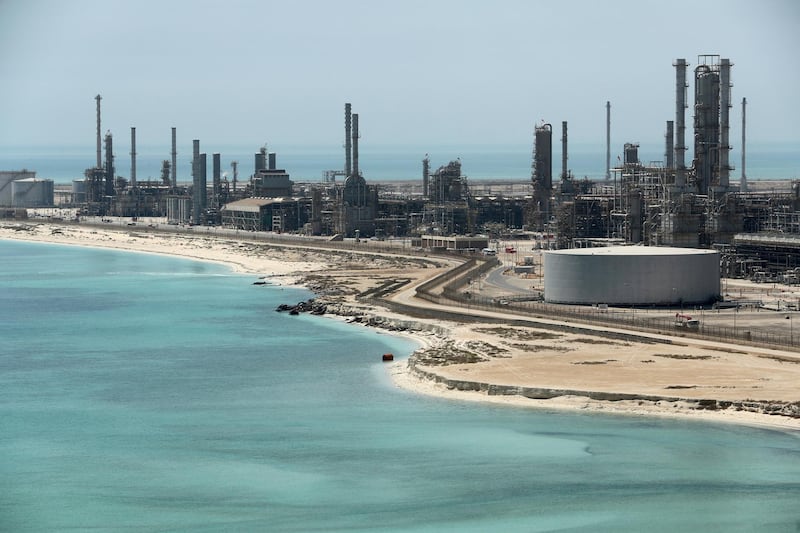How to absorb an abundance of light sweet crude is the oil market’s big question?
Opec’s production controls have reduced stockpiles but the question of narrowing the gulf between sweet and sour grades remains unanswered.
There is a widening disparity between the quantity of heavy and light crudes and between sweet and sour crudes, which has been exacerbated by the recent Opec/non-Opec cuts; the dramatic rise of US shale output; the upswing in oil prices and growing geopolitical tensions.
Even with the Saudi-Russian alliance planning to pump an extra 1 million barrels per day (bpd) of heavier sourer crude, it is unlikely to offset the glut of lighter, sweeter crude. This disparity will keep the market off balance. Producers with the capacity to inject crude back into the supply chain can produce heavy to medium and sour grades. This is high in sulphur but, when refined, it yields a lot of fuel oil and residual products.
Saudi Arabia could bring on line up to 11 million bpd, according to Platts Analytics, before Opec’s largest producer starts to test stress levels. Iraq, Kuwait, UAE and Russia can also deliver extra crude to a market at short notice. Indeed, according to latest Platts estimates, Kuwait and UAE have added almost 200,000 bpd collectively in July, while Russia has brought on 150,000 bpd.
But for an oil market craving the heavier and sourer varieties, particularly refiners in the largest consuming nations of China, US and India, which are set up to handle large volumes, these Arabian Gulf volumes don’t help.
Furthermore, Iran could see 1 million bpd of its crude, also largely heavy and sour, wiped off the market by the end of the year due to looming US sanctions in early November, as Opec’s third largest producer hangs its hopes on China and Turkey still taking some of its crude.
Meanwhile, US crude production is expected to rise to close to 12 million bpd by the end of 2019 according to the US EIA, which compares to an estimate of 10.72 million b/d this year.
Output has rocketed in the past few years fuelled by output from key shale formations including the Permian and Eagle Ford, flooding the market with lighter sweet crude. While supply constraints have put the put brakes on exports, the market has been awash with US low sulphur crude and there is little sign this will change any time soon.
_______________
Read more:
Regional oil producers eye downstream expansion
How Saudi Arabia plans to price its oil
_______________
Moreover, a glut of light sweet crudes is reappearing in the Atlantic Basin with Nigerian barrels still struggling to find end user demand while floating barrels of North Sea crude have also emerged.
The spread between the light sweet Platts Dated Brent benchmark and the medium sour Platts Dubai measure has narrowed considerably in the past month, reflecting the growing disparity between grades.
The Brent/Dubai Exchange of Futures for Swaps (EFS), which is a key indicator of ICE Brent's premium to benchmark cash Dubai prices, has been trading at a year low of around $1 per barrel this past week. In July 2016, the Brent/Dubai EFS was as wide as $4.50 per barrel.
This narrowing premium of Dated Brent over Dubai is encouraging key Asian refining hubs to import lighter crude from West Africa, Europe and Russia that are priced on a Brent-related basis.
Crude quality matters for the market. The light, sweet barrel which was until almost a decade ago every refiner's most sought after oil barrel, has lost its lustre, and has emerged as the swing barrel.
Refineries wanted to refine light sweet oil in order to produce a substantial amount of middle distillates and petrol, the profit-making products for refineries. But this oil is no long as attractive as it used to be. Technology advancement among refineries has meant that those with complex distillation units can process heavy sour crudes and still get a lot of petrol and diesel, at much cheaper costs.
But the popularity of light sweet crude is expected to observe a comeback as the International Maritime Organisation’s low sulphur cap on marine fuels comes into effect in 2020. This regulation will drive demand for lower sulphur products, and consequently trigger stronger demand and profitability of crudes that are low in sulphur.
The IMO could make the crude grade puzzle even harder to solve.
Paul Hickin is associate director for oil at S&P Global Platts. Eklavya Gupte is senior editor, Oil News






